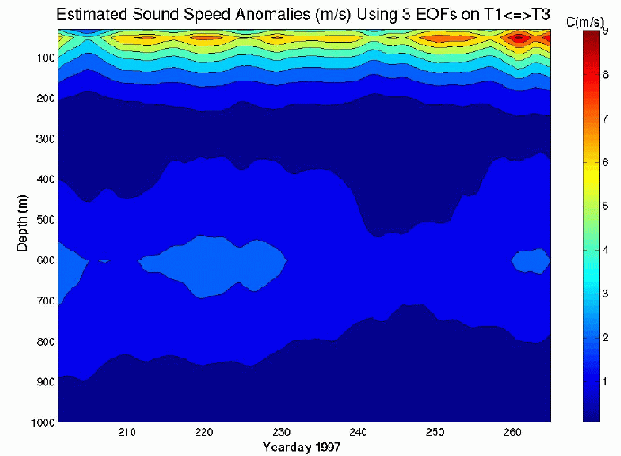Differential travel times from a tomography ray in the surface layer
compares well with the SLA.
|
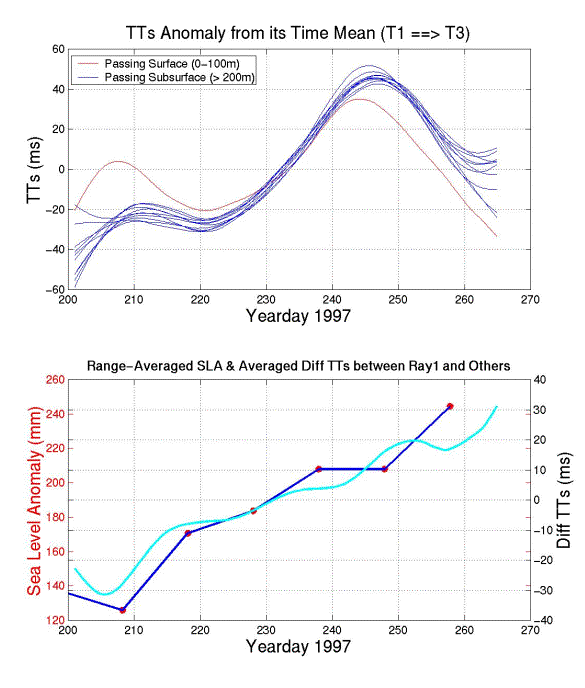
|
Top: 10-day averaged travel time series of the arrivals on
the T1-T3. The red one is the steepest ray (Ray1) which can access
surface layer. Bottom: Comparison of the differential TTs from Ray1 to
others and the SLA.
|
Temperature perturbation as a function of layer
|
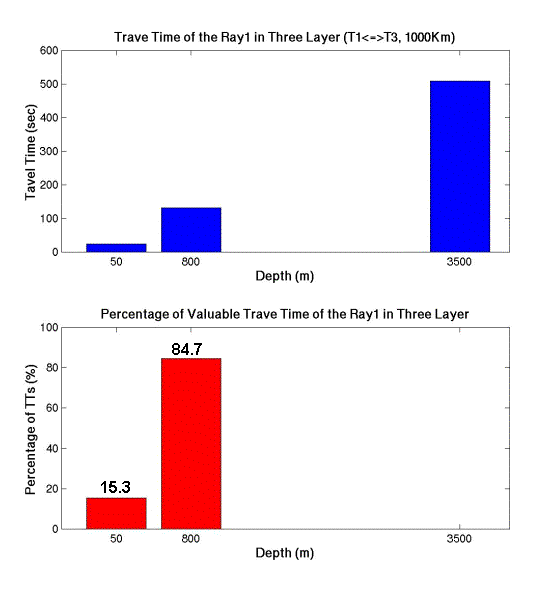
|
Top: Sum of the travel time in the three layers (0-100,
101-1500, and 1501-5500 m) for the Ray1 on the T1-T3. Bottom: Assuming
the temperature variation only occurs in the Layer1 and Layer2, and
the percentage of the effective travel time in each layer can be
calculated. The temperature perturbation in each layer can be
obtained by this ratio.
|
The contribution of horizontal eddy advection,
rather than one-dimensional local forcing, may dominant the heat budget
in the recirculation region.
|
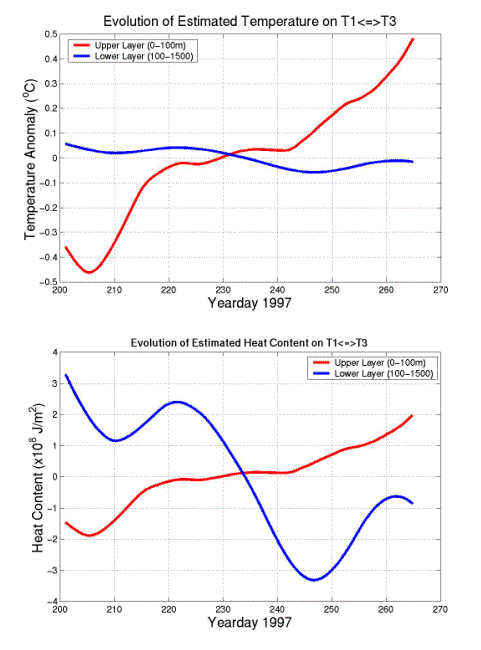
|
Top: Estimated range-averaged dT in the two layers. The dT
has been warming up about 1.0° C in Layer1, but cooling down
about 0.15° C in Layer2.
Bottom: Corresponding heat content in the two layers.
|
The warming in the surface layer derived from acoustic data is
consistent with the steric height change determined from the
net heat flux data from NCEP/NCAR.
|
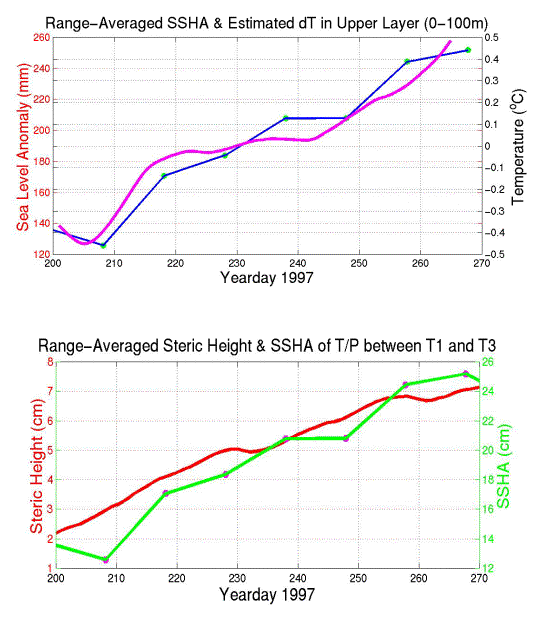
|
Top: Comparison of the SSHA and estimated dT in surface
layer on the T1-T3. Bottom: Comparison of SSHA and the steric height
derived from NECP/NCAR reanalysis net heat flux. It shows
5 cm out of a total of 12 cm of SSHA change comes from
changes in steric height (one-dimensional local forcing).
|
The
barotropic westward-flowing velocity determined from
reciprocal acoustic travel times in the recirculation region is about
5 cm s-1 and compares well with surface geostrophic
current velocity determined from T/P SSHA.
|
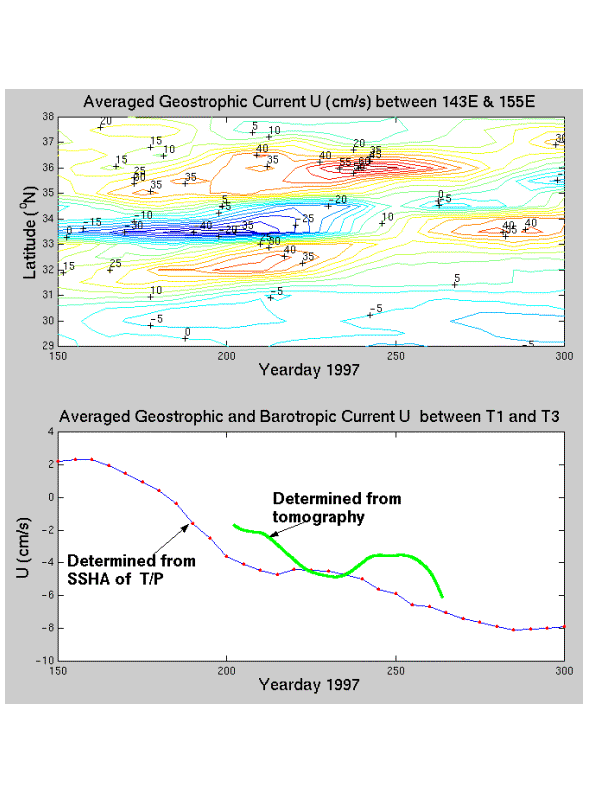
|
Top: Range-averaged zonal geostrophic current between 143° E
and 155° E derived from SSDH. It shows that axis of the Kuroshio
Extension is between
35° N and 37° N, and has been moving
northward from the day 200 to day
240. Bottom: Comparison of the geostrophic current from T/P SSHA
and barotropic
current determined from differential TTS. The barotropic current is
comparable with the geostrophic current.
|
